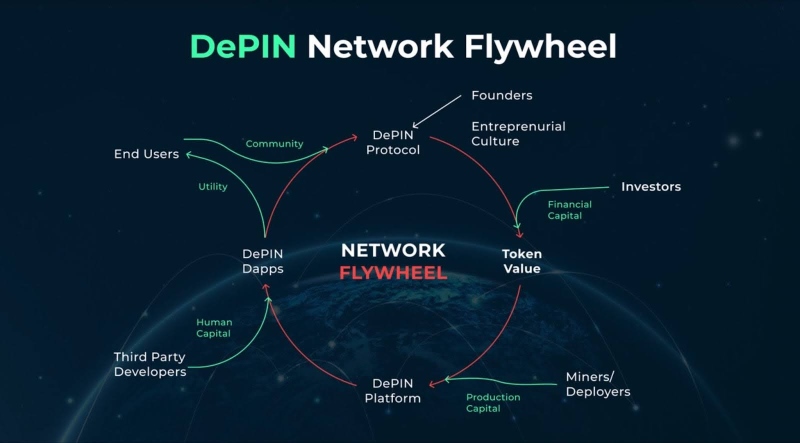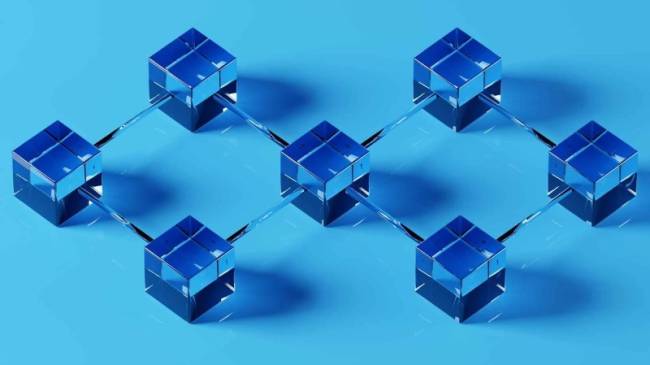Categories: Blockchain
DePIN Business Model: Unpacking Decentralized Physical Infrastructure Networks
The DePIN business model integrates decentralized physical infrastructure networks, leveraging IoT, blockchain, and AI to create new revenue streams. This model offers strategic benefits, such as enhanced efficiency, security, and scalability, driving innovation across various industries.
The rise of DePIN is reshaping how we think about real-world services and their connection to the digital world. DePINs offer a compelling alternative to traditional business models, promising greater efficiency, community ownership, and innovative revenue streams. This article explores the core of DePIN business model, its strategic advantages, and how both businesses and individuals can thrive in this emerging landscape.
Table of Contents
Understanding the DePIN
DePIN, or Decentralized Physical Infrastructure Network, is revolutionizing how we build and manage infrastructure. By leveraging cryptocurrency incentives, DePIN fosters a collaborative environment where individuals contribute their resources to efficiently develop and maintain essential infrastructure.
Unlike conventional, centralized systems, DePINs employ blockchain technology to establish peer-to-peer networks. Within these networks, participants share ownership and control over the infrastructure they collectively create, promoting a more equitable and decentralized approach.
DePIN Flywheel

Decentralized Physical Infrastructure Networks (DePINs) leverage the power of tokens to fuel their growth. As the network sees increased usage, the demand for its native token rises, driving up its value. This price appreciation, often bolstered by mechanisms like token burns or buybacks, incentivizes contributors to further enhance the network, as the value of their rewards grows.
This creates a self-sustaining cycle: greater usage leads to higher token prices, attracting more contributors who expand the network, leading to even greater usage. Additionally, the rising token value and expanding network often attract investors, providing further capital for development.
DePINs that embrace open-source principles or prioritize public data availability can supercharge this growth. Developers gain the ability to build decentralized applications (DApps) on top of the network, creating additional value and attracting new users and contributors. This broadens the ecosystem, making it more resilient and attractive.
What DePIN business model for flywheel DePIN?
The key to DePIN success lies in maintaining a continuous cycle of growth and balancing supply with demand. This requires strategic "fuel" injections—targeted investments at optimal times and locations. In other words, consistent revenue generation is essential.
Many existing DePINs rely on traditional Web3 methods like commission and transaction fees or token appreciation. While effective in the speculative crypto world, these approaches might not translate well to a broader market.
However, savvy DePIN entrepreneurs are starting to realize that established online business strategies can be adapted for the blockchain. By embracing proven "Web2" tactics, they're finding new ways to achieve sustainable growth, proving that business fundamentals transcend technological platforms.
DePIN's strategic benefits for traditional businesses
DePIN leverages blockchain's strengths in security, traceability, and efficiency to revolutionize physical infrastructure management. By utilizing smart contracts, DePIN automates tasks and transactions, minimizing manual intervention and thereby reducing costs and accelerating service delivery. This fosters a collaborative environment where infrastructure can be developed and maintained by a distributed network, incentivized through tokens to actively participate in the network's growth and governance.

As industries embrace decentralized models, DePIN provides businesses and entrepreneurs with a transformative opportunity. Integrating DePIN allows companies to streamline operations, achieve greater sustainability, and contribute to more equitable resource distribution, ultimately reshaping industries for the better.
How the DePIN project makes money
1. Transaction fees/commissions: DePINs often charge a percentage or fixed fee on transactions within their network.
Example: Akash, a decentralized cloud computing platform, collects transaction fees on computing resource leases.
2. Token value appreciation: Some DePINs hold reserves of their native token, benefiting as the token's value increases.
Example: DIMO, a driver data network, allocated a significant amount of DIMO tokens to its team, experiencing value growth in 2023.
3. Upfront payments/hardware sales: DePINs may require a one-time payment or hardware purchase for users to join the network.
Example: Hivemapper, a decentralized mapping network, sells specialized dashcams for data collection.
4. API access/on-chain data sales: DePINs can generate revenue by selling access to their APIs or on-chain data.
Example: Hivemapper also sells API access to its street-level imagery for applications like insurance.
.jpg)
5. Enterprise/government integration: DePINs offering essential services like energy or connectivity can integrate with large organizations for revenue.
Example: PowerLedger, a decentralized energy trading platform, integrates with various energy companies and governments.
6. In-app advertising/affiliate programs: DePINs with consumer-facing apps can sell advertising space or use affiliate programs to reward users who bring in new customers.
Example: Sweatcoin, a fitness tracking app, incorporates in-app advertising and has a referral program.

How can individuals make money on DePIN?
DePIN enables individuals to earn money by contributing their resources to the network. These resources can vary depending on the specific DePIN business model:
- Decentralized computing: You can earn tokens by providing your unused computing power to the network.
- Decentralized data storage: If you have extra storage space on your devices, you can rent it out in exchange for tokens.
- Decentralized wireless network: Share your internet connection through a hotspot and receive tokens when others use it.
- Decentralized sensor network: If you have devices with sensors (e.g. air quality sensors, weather stations…), you can earn tokens by providing data from these sensors.
- Decentralized energy: In some cases, you can earn tokens for contributing excess energy generated by your solar panels or other sources.
Essentially, DePIN creates a marketplace where individuals can monetize their underutilized resources, fostering a more participatory and decentralized digital infrastructure. The more resources you contribute, the more tokens you earn.
DePIN presents a paradigm shift, merging the physical and digital worlds in unprecedented ways. By understanding the unique DePIN business model, strategic benefits, and diverse revenue streams, traditional businesses and individuals alike can stay at the forefront of this technological revolution. Don't forget to continue following the U2U Network website to stay updated with the latest related knowledge.
.png)